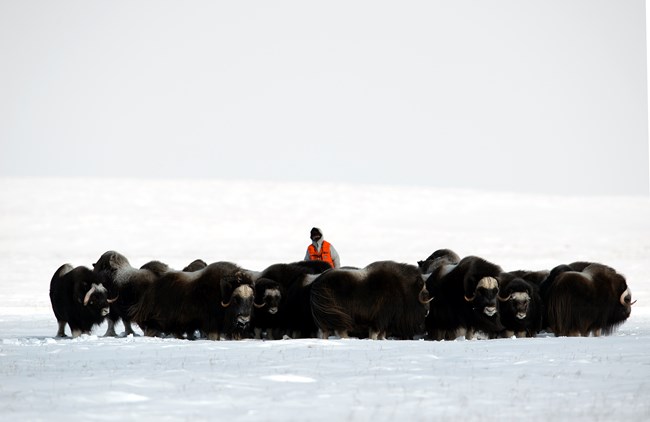
By the middle of the 19th century, muskoxen were extirpated from Alaska, but were subsequently re-established in the 1930s and in the 1970s on the Seward Peninsula and near Cape Krusenstern National Monument. Currently, viable muskoxen populations occur in four locations in Alaska, two of these ranges overlap Arctic parklands. Otherwise, muskoxen are rare worldwide. Since their establishment, muskoxen have become an important subsistence food for local residents and are highly prized for sport hunting (where permitted). Muskox populations may have substantial effects on plant communities through grazing and, by extension, other wildlife communities.
We monitor muskoxen across all Arctic parklands to document:
- Long-term trends in muskox abundance and distribution.
- Long-term trends in sex and age composition of muskox herds.
Contact: Letty Hughes
Learn more
Last updated: December 5, 2019
